Another morning dawned beautifully in the beauteous capital. We were really excited for two things. First, we were scheduled to partake of a weekly British tradition: the Sunday Roast. Best of all, we had an appointment to have tea at Buckingham Palace in the Queen's garden!
Knowing that our noontime meal would be substantial, we started our morning with a light breakfast in the Italian Gardens. We cherished its scenery and affordability.
NYC has nothing like that near any of Central Park's 842 acres, and Central Park's restaurants are both monopolized by a lecherous pair of brothers who mistreat their workers. Look at my photos again: those are reasons why Londoners are happy.
We also liked the vibe of the friendly staff at its cafe. While ordering our fresh-squeezed orange juice, I watched two employees arrive. They were students who recently returned to London for college. Other coworkers cheered and embraced them; it was a heartfelt reunion. Camaraderie is indicative of a satisfying job. Then, an Italian woman emerged from the kitchen to give me our oven-warmed croissant, stuffed with ham and mushrooms. Her smile sparkled, as I greeted her in her native language: Buongiorno! She hugged her other coworkers, and everyone quickly turned their attention to the line of amused customers. As a mark of merit, the line always moved fast at that cafe, yet care was taken with every beverage and plateful of food. Once again, my latte was expertly ground, tamped, and made, and the foam art was pretty. If you intend to stay and drink your beverage, the cafe gives ceramic cups and saucers.

Properly-made, the croissants created perfect flakes when broken into. Croissants shouldn't be blobs of dough; they should have a crunch when bitten.
Everything looked good, smelled fresh, and tasted astounding.
Energized, Lewis wanted to explore Kensington Gardens.
We traipsed along its many paths. At the lake, we walked along the quay and watched ducklings get fed by their mother. Signs ask people not to feed the animals, but we saw many people doing it. We didn't. In a grove of trees, people paused and held pieces of fruit in the air; green parakeets flew down and gently ate it. Many Londoners pass through the park after work and pause from their homeward commutes to feed the parakeets.
We saw more swans swimming in the lake, while geese and ducks warmed themselves on the lawn.
Dog-walkers ignored them because their terriers were more focused on romping through the thigh-high reeds of the meadows. The Royal Parks deliberately keeps part of the land "natural" for rustic enjoyment.
We photographed the Peter Pan statue that commemorates a famous English fairytale.
Everything was pristine—including the tractors used by park workers.
We chose paths randomly, delighted in the scenes that we encountered, and we inadvertently crossed the whole park. Finding ourselves by Brompton Road, we hailed a Black Cab and were driven in (skylit) spaciousness to SoHo.
We kept the rear windows open and let a freshening breeze tickle our faces. (We were thankful for London's huge environmentalism for clean air to reduce carbon emissions and rely on renewable energy).
The taxi deposited us on Great Windmill Street (the windmill is long-gone). The neighborhood of SoHo got its first homes in the 1680s, but nobody is certain where the name originated. (NYC's neighborhood was named for it, but it became an acronym for South of Houston Street). In the 20th-century, it earned a reputation for entertainment, music shops, and the sex industry. Now, it encompasses upmarket shops, media headquarters, and nifty eateries... amidst shops for sex workers. Prostitution is legal in England, Scotland, and Wales, but brothels, pimping, and public solicitation is not. We saw more gay couples, too. Unlike American cities, London doesn’t need a “gayborhood” because homosexuals don’t feel the need to cling together in their own areas. They live harmoniously throughout the boroughs. Noticeably unlike the USA, they didn't feel compelled to conform to outfits of "tank tops and shorts". In summer in NYC, we see it daily, as if individuality is gone... and many gay clubs reject people who wear more than that. Yet, gay Londoners expressed themselves via many outfits; many were shirtless under blazers and jackets.
We stepped into a famous eatery named Blacklock. We were punctual. It was a triumph to get the noontime reservations because the popular place is usually swarmed with eager eaters.
Blacklock was full of locals, and we go where the locals go! The restaurant is named for a metal foundry in Tennessee that made irons, which its chefs use to press meat to their grill.
That location was the first of four, and it's below street-level. Originally, the site had a business that "sold flesh" in a different way; it was a brothel. That was before prostitution became legal in England in the 1860s.
Originating in England during the reign of King Henry VII, Sunday Roasts used a recipe that cooked meat slowly while churchgoers fulfilled their religious obligations. Chophouses sprang up in the 1690s, and they appealed to Blacklock’s founder, Gordon Ker (seen below), who was formerly a private equity lawyer.
Thanks to his efforts, Blacklock quickly ranked "Top 100" in the 2016 National Restaurant Awards for Best Sunday Roast.
The restauranteurs searched three constituent nations of the kingdom, and they began buying their meat from Philip Warren and his son, Ian. Founded in 1880, they are third-generation animal farmers and butchers.
Despite the investment needed, they focus on rare breeds of native meat, coming from grass-fed animals that were raised sustainably and caringly atop Madmin Moor and in the Tamar Valley in the South of England. That is where I'd want food coming from, too.
(Due to its greedy corn industry, America’s cattle are unhealthily fed with corn, and the beef industry allows cows to be mistreated with chemicals and hormones that taint the meat).
In addition to planting trees, Blacklock is eco-friendly by using the whole animal; nothing is wasted. Again and again, Lewis and I were impressed that big-and-small eateries were "food purists". We don't see that as often in the USA.
The team at Blacklock is on-track to being certified as a business that values “purpose over profit”. Blacklock remains renowned for its fair prices, which American chophouses abhor. By “trimming the fat” (from administrative costs and greed), their business-model works: four locations operate successfully!
Lewis and I wanted to share a platter of tender goodness. Their £24.00 per person “All In” menu ensures a superb Sunday Roast: 55-day-aged beef rump...
...28-day-aged leg of lamb...
... AND 21-day-aged pork loin.
Customers get all three! Furthermore, the portions are sizable! Remember that our Sunday Roast at The Stablehand cost £22.00 but only included one type of meat... and the portion was smaller. In fact, everything was "less". At Blacklock, you are given immense value for your purchase.
It's marvelous that Blacklock is fair-priced for what it provides. For comparison, its own butcher sells the two 10-ounce pieces of 28-day-aged rump for £15.25 (not even 55-day), and 900g of unaged lamb leg for £20. As another comparison, a nearby eatery priced its Sunday Roast higher at £32 but only gave 45-day-aged beef, pork belly, and chicken. Blacklock is the place that we recommend... and will return to!
We were seated at a table-for-two under a skylight from the sidewalk. That nicely accentuated our subterranean location.
The dining room was full. Servers worked in unison for the whole room. Cocktails were dispensed from a drinks trolley that was wheeled around the room (reminiscent of a private club), while another bartender worked behind the staircase.
The lavatories were fitted with vintage fixtures, exposed copper pipes, tiled walls, and nifty artwork. Under heat lamps, food was passed through a counter-window from the bustling kitchen.
To start my savory experience, I sipped a Beefy Mary cocktail that was a Bloody Mary concocted with meat jus, Worcestershire sauce (locally made in Worcestershire, England), cracked peppercorns, and plenty of horseradish. Brilliant. Also priced at £8.00, Lewis selected Usual Suspects: jalapeño tequila, Aperol, grapefruit, lime, and Prosecco. The bartender has a "Pit to Peel" philosophy to use every last drop of every fruit—to limit waste.
*Worcestershire sauce was invented in the 1830s in the City of Worcester in Worcestershire by John Lea and William Perrins. They created the Lea & Perrins sauce company to make their fermented condiment that focuses on malt vinegar, molasses, anchovies, tamarind, and garlic.
*A Bloody Mary is named for England's Queen Mary Tudor who began her reign in 1553. As a follower of Roman Catholicism (which was intolerant of other religions), she massacred non-believers.
Next, Lewis ordered a Starter of creamy mushrooms on Coombeshead Sourdough toast. The bread came from the 66-acre Coombeshead Farm in Cornwall's countryside. It has charging points for electric cars, and a farmhouse that accommodates 12 overnight guests. It also teaches people how to make bread. It looks like a place where we might have fun!
When our main course arrived, it was a whopping-size platter that made us salivate!
The “whole joints” were roasted on English oak and coals.
Traditional gravy is made from the flavorful pan drippings, and potatoes are scrumptiously roasted in duck fat. Customers can have refills of as much gravy as they want. Lewis and I lavished three gravy boats of succulence on our meals!
The quality of the meat made it feel lighter in our tummies. We didn't feel bloated or groggy after eating. That is how good meat should be. Your stomaches never lie.
Atop each portion was a piece of pork crackling (fried skin).
Of course, our meal included the must-have Yorkshire puddings. Invented in Yorkshire, England, the batter for the puddings (puds) is made with fat drippings from the cooked meat. The pudding is meant to rise, and the Royal Society of Chemistry decreed that a proper pud should be more than 10cm high. We saved them for last, so we didn't fill our tummies too soon, and we sliced them open and drizzled gravy, so the puds soaked it up. Divine!
Seasonal veggies accompanied it, and the potatoes were crispy from being roasted in duck fat from the butchershop. Their texture and taste was astounding!
Lewis was enticed to order a £4.50 bowl of cauliflower topped with four cheeses. It was presented in a small cast-iron pot, which kept it warm. Everything was perfect!
After three rounds of gravy, our Jamaican waitress was impressed that we cleaned our plates: no waste. We still wanted one portion of dessert to share because Lewis loves white chocolate, and Blacklock is known for its £6.00 white chocolate cheesecake. It's not a heavy cake, like you find at America's Cheesecake Factory; it was lusciously satisfying. As luck had it, we received the final portion, so the server charmingly put the whole baking-pan on our table.
As a digestif, we sipped a chilled espresso beverage with liqueur and frothed cream. Extremely tasty.
The UK has a non-tipping culture, but some establishments add a 12% service charge, which Blacklock did… with the hospitable proviso that it would be removed if service was imperfect. Full of gratitude for a memorable meal, we gladly gave the gratuity.
Stepping outside into the sunlight, we burned calories by walking to our next destination within the City of Westminster. We love that London is a walkable city, and so many of its streets give priority to pedestrians and cyclists. Arm-in-arm, we headed to the Queen's most-famous royal residence.
Getting closer to her London address, we entered St James's Park.
A famous French gardener, André Mollet, redesigned it for King Charles II. He added a double-sized avenue (The Mall) and a long canal, which was refashioned into the current lake. It sustains flocks of waterfowl, which we enjoyed. Flowerbeds bloomed brilliantly. Leaves rustled underfoot, as we traipsed over the lawn. Kids played ball, dads gave piggyback rides, and Londoners laid on blankets. Serenity. Despite being surrounded by governmental institutions, we noticed the lack of traffic noise, car horns, sirens, and noise pollution.
*Interestingly, the community of Elmhurst in NYC has a historic English-built church from 1736 named St. James. It's the oldest Anglican one in the US, yet NYC uncaringly lets it rot without assistance.
As we crossed the footbridge, we caught site of the palace. The vantage point provided a nice photo.
Two months ago, it was the backdrop for a four-day holiday of jubilant festivities for the Queen's Platinum Jubilee, watched by people around the world!
Getting closer, we walked past Wellington Barracks, where incoming soldiers are garrisoned to guard the palace.
It's on a road name Birdcage Walk, which reminds me of the gay-friendly film, The Birdcage. That part of the park was notoriously used by gay men, before homosexuality was legalized in 1967. (During that same time, gay men in NYC started to rebel from police brutality, but homosexuality wasn't legalized until 2003... despite America being "Land of the free").
We were repeatedly impressed by the quality of Snack Bars that are positioned in the royal parks.
Suddenly, we saw it...
One of the most well-known buildings in the world is Buckingham Palace. It is a national landmark. It sits in a green oasis in the middle of London's urbanity.
It served three dynasties: Hanover, Saxe-Coburg-Gotha, and Windsor. It’s the administrative headquarters of the monarch (containing 92 offices), and it is a royal residence for Her Majesty and several members of her family. It is also a residence for many live-in staff members; there are 188 staff bedrooms, and palace employees are served meals on-site. That makes it more like its own village. It has its own post office, police station, health clinic, and cinema.
From our world travels, it was our 16th royal residence; previously, only 8 were actively used. When the monarch is in residence, the Royal Standard is hung on the flagpole. Otherwise, the nation's flag appears. It is named the Union Jack. Created in 1606 and updated in 1801, it’s a combination of England’s (Saint George’s Cross), Scotland’s (Saint Andrew’s Saltire), and Ireland’s (Saint Patrick’s Saltire) flags. (During those centuries, Wales was considered part of England).
Each year, 50,000 people are guests at Buckingham Palace for State Banquets, luncheons, dinners, receptions, awards, knighthoods, honor conferments, and Garden Parties. Most dignitaries are thrilled by the classic arrival via horse-pulled coaches, greeted by a military band, and red-carpet treatment. How many nations have the wherewithal to impress VIPs like that?
Every week, Her Majesty has briefings with the Prime Minister. The palace is where she receives newly-appointed dignitaries from other nations. As a "home" of the British Royal Family, the palace was the starting point for coronations, the Openings of Parliament, jubilees, the funeral of King George VI, and the weddings of Prince Charles and his son, Prince William.
For a majority of the year, the palace is off-limits to the public. But for 10 weeks (beginning each July), visitors get a treat; the palace opens its doors to 19 gorgeous State Rooms. We were fortunate to visit in summertime. During each of the past two years, half a million people bought tickets to see them! (For comparison, the royal palace and mews in the Netherlands is only opened to the public for four Saturdays in the summer).
We follow the Royal Collection Trust on social media, so we knew of a great bargain named A Royal Day Out. Each £55 ticket provides discounted access to all four segments of the palace: the Queen’s Gallery (attached but separate from the palace), the Royal Mews, the State Rooms of Buckingham Palace, and the Royal Gardens: the monarch’s property and largest private garden in London. Click this image to make it bigger....
Normally, tickets cost: Queen’s Gallery £17; Mews £14; Palace £30; Gardens £14.95. (There are discounts for young people, children, and disabled visitors. Kids under 5 are free).
This year, the Queen’s Gallery featured a special exhibit that interested us: Japan’s Royal Courts and Culture. It related to things that we learned during our trip to Japan. Furthermore, in commemoration of the Queen’s Platinum Jubilee (an unprecedented 70 years on the Throne), the palace displayed the first official portraits of the young Queen, as well as her priceless jewels from those moments. Included with our admission was the chance to make purchases at the Garden Café to sip tea and nibble on homemade cakes in Her Majesty’s garden. A magnificent agenda! How could you not have fun?
In the Middle Ages, the land was marshy due to the River Tyburn, which still flows beneath the south wing of the palace as a sewer drain. During Saxon times, the land belonged to Edward the Confessor. After the Norman Conquest, William the Conqueror owned it. It was bequeathed to monks of Westminster Abbey. In 1531, King Henry VIII looked around London for a hideaway to keep his mistress, Anne Boleyn, and he commissioned St James’s Palace. Then, he paid her enormous gambling debts and redeemed her jewels from a pawn-broker. (Alas, he killed her before the palace was completed). That same year, he utilized the English Reformation to confiscate lands from the Roman Catholic Church. Ergo, after 500 years, the site of Buckingham Palace was returned to the English Crown. (As you can see, it seemed destined for that purpose).
In 1633, ownership was rented to Lord Goring, who established much of the current gardens. When he defaulted on his rents, the Secretary of State bought the lease, but his house burned down in 1674. So, a townhouse was built; its location is now filled by the southern wing of the palace. By then, the area was fashionable, and the 1st Duke of Buckingham & Normanby (that is not misspelled) acquired the lease. (Don't confuse him with the 1st Duke of Buckingham, who—at age 21—became the young lover of King James I for 11 years). The duke demolished the house to build a grander one named Buckingham House. It was Britain’s first private home done in the baroque style.
At age 72, the duke died, but his wife remained. A male midwife "socialized often" with the duchess and died in the house in 1728. One year after ascending the throne, King George III tried to buy it. When the offer was respectfully declined, the king’s advisors researched the truth that the duke inadvertently built upon royal property: a mulberry grove previously used by King James I in 1610 to grow silk worms. (He was the same gay king who authorized the first settlement in North America: Jamestown, Virginia). The grove's land is at the northwest corner of the palace, and one original tree from 1610 remains. *We learned that from a mini-series by Lucy Worsley, who is the Chief Curator at Historical Royal Palaces. Lewis loves her many episodes.
Thus, the duke was obliged to sell the property to the Crown in 1761. (Essentially, the mulberry trees failed for King James I, but they saved the palace for the royal family in the future). *Trivia: Buckingham County in Virginia is named for the duke.
The king and queen often resided there and used St James’s Palace for the royal court. It was perfect for Queen Charlotte, who was synched with King George III in many ways.
Charlotte’s father ruled the Duchy of Mecklenburg-Strelitz. After his death, her brother was the duke of their land, which bordered Hanover in Germany—the place where Britain’s King George I and King George II were from. At age 21, the future George III was compelled to ignore having a girlfriend in England to avoid favoritism to any British family. At age 22, his father died, he was crowned as king, and he sought a foreign bride.
At 17-years-old, Princess Charlotte became contractually obligated to marry him. They were married on the day that she arrived in England, and their coronation occurred 2 weeks later. George and Charlotte were also the King and Queen of Hanover. She didn’t know how to speak in English, but he was fluent in German. George’s grandfather was famous for many mistresses, but George was faithful to Charlotte. The royal pair began the ritual of debutante balls (which American proms are based on), and she introduced Christmas trees to Britain in 1800. *Trivia: Founded in 1765, Virginia's Charlotte County and Mecklenburg County are named for her. Founded in 1762, North Carolina's Mecklenburg County is also for her.
Buckingham House was remodeled and modernized… but not expanded. It was one of the most sophisticated homes of its time. In its homey serenity, 13 of the royal pair’s 15 children were born there. A daughter named Charlotte became Queen of Wurttemberg, Elizabeth became the Landgravine of Hesse-Homburg in Germany, and Ernest was crowned as King of Hanover.
*The queen is immortalized in America: the City of Charlotte in North Carolina is named for Queen Charlotte (and the State of Georgia is named for her father-in-law, King George II).
Upon the king’s death in 1820, his heir, George IV—who grew up in Buckingham House—saw its potential and enlarged it. He hired a famous designer named John Nash, who previously built great structures in each of the constituent nations of the UK.
In 1825, the crux of the current edifice was styled by Nash, but the king’s command was to restore and enlarge the existing house. Consequently, the old floorplan, height, and dimensions were kept. Therefore, the layout of Buckingham House dictated all subsequent additions and structures of Buckingham Palace. As such, the underground wine cellar (holding 25,000 bottles) is one of the oldest parts of the palace. (During WWI, King-Emperor George V enforced alcohol rationing within the palace by locking it). Nash’s masterplan involved three parts of a square. For many years, the palace had a C-shape.
That is a drastic alteration from father to son. Compare the next two images: "Before & After".
Later, the palace was fronted by a fence with an archway named Marble Arch.
A commentator of the 1860s complained, “Government mismanagement ruined the magnificent gates of the arch. Their cost was 3,000 guineas, and they are the largest and most superb in Europe—except for the ducal palace at Venice and those made for the Louvre Palace in Paris. Yet, the government conveyed these costly gates from the manufacturer’s in a ‘common wagon’, and the most beautiful portion of the design was irretrievably mutilated. Consequently, it has not been fixed in the archway to the present day”. Nowadays, Marble Arch is in the northeast corner of Hyde Park. (I'll show you later).
After the reigns of two monarchs ended, the front wing was added in 1913; it gave a statelier face to the residence. Its creator, Sir Aston Webb, designed the façade of the Victoria & Albert Museum (which we visited two days later).
Throughout all the generations, the palace's central balcony remains famous for its inhabitants giving "the royal wave" to onlookers.
Approaching the monumental palace is breathtaking from any angle. It is in the "heart" of London. The traditional route towards it via The Mall, which is a long, wide thoroughfare that provides plenty of anticipation. Connecting the palace with the Prime Minister's residence (a Grace-and-Favor home given by the monarch), it's used by thousands of people, each day.
The palace faces a traffic circle, yet those vehicles are blessed with majestic garden scenery of seasonal plantings that encircle a burbling fountain.
Around the the sides and back of the royal grounds, tall walls bristled with barbed wire, motion sensors, surveillance cameras, and spiked iron deterrents from the prior century.
Fronting its forecourt, the palace has a regal-looking fence with magnificent gates. Topped with golden fleur-de-lys, they were installed in 1911. Before then, the palace was “approachable” to pedestrians and all royal subjects.
In 1913, the palace cleaned London’s industrial grime off its Caen stone façade, and a sculptor named Thomas Brock added the imposing columns and removed the urn-shaped pinnacles from the roofline.
During World War One, the property was luckily unscathed by German airships that dropped bombs on the capital. However, during World War Two, it was targeted and struck nine times. A few bombs fell on the fence and mutilated it.
Mercifully, the four wings of the main structure were untouched.
Emblematic of the monarchy, the gates are popular places for Brits to congregate, celebrate, and share sorrow.
Reciprocating, the royal family posts announcements of births, weddings, and deaths on the gates.
Entering the forecourt is fraught with danger, unless you are invited in. The gates are usually locked, and they are backed by retractable anti-vehicle barricades. The perimeter is patrolled by constables of the Metropolitan Police Service. Throughout England, every police officer swears an oath of allegiance to the Queen.
Most obvious, the forecourt is guarded by The Queen's Guard: soldiers who occupy guardhouses and act as sentries who pace back-and-forth. Military guards for the Sovereign include foot guards and mounted guards.
Every enlisted or commissioned member of Her Majesty’s Armed Forces swears their allegiance to the Queen. (Since its inception in 1546 as the sixth-oldest navy in the world, the authority of the Royal Navy derives from the Crown, not Parliament. Therefore, via a royal prerogative, naval officers are not asked to state their obvious allegiance to the Crown).
Perhaps because their constancy is like the seasons, members of the Queen's Guard are emulated by youngsters.
Please enjoy my video of a boy "parading" like a guardsman, while wearing a uniform hat from the Gift Shop...
Night and day, it's a local pastime to ogle whomever is admitted to the palace... and watch famous people, as they exit.
The structure is so evocative of the monarchy that when people refer to statements made by Palace Staff, they don’t give names; they simply say “Buckingham Palace tells us that…” or “A spokeswoman for the Palace stated…” or “The Palace denied a claim that…” (There are several official palaces in London, but everyone knows which one).
The front wing is full of administrative offices. In America, we refer to a household as the people living in your home. In the UK, the royal family is served by members of the Royal Household. It includes "Servants of the Crown" that work closest to the royal family on a daily basis. Managing the day-to-day operations, Vice Admiral, Sir Tony Johnstone-Burt is the Master of the Household. His boss is the Queen.
If you like things at the palace, you can give compliments to the Comptroller who manages expenditures with the Keeper of the Privy Purse (the Queen’s treasurer). As part of the Royal Household, the Gold Stick and the Silver Stick are sobriquets for monarchial bodyguards during ceremonial events. Another member is Her Majesty’s Marshal of the Diplomatic Corps, who oversees Her Majesty’s Ambassadors around the globe.
Months ago, Lewis and I obtained permission to enter the famed gates and bypass the royal guards. We were giddy with gratitude and enthusiasm. Seeing the palace in the media for years, how many people thought they would actually be in it without an invitation?
We were expected to begin our visit at the Queen's Gallery: a separate structure on the east side of the palace grounds. It is on the site of a former chapel and conservatory built by Queen Victoria. Alas, they were destroyed in 1940, during WWII, when Nazi planes dropped bombs on the palace.
(Falling from the sky, another bomb landed in the quadrangle and shattered many windows).
It was part of Adolf Hitler's Blitzkrieg firestorm bombings. London was subjected to his Luftwaffe bombing attacks for 76 consecutive nights. The night with the highest casualties totaled 1,364 souls. It was reminiscent of WWI, when Imperial German zeppelins silently flew over the capital and dropped bombs.
While America opportunely waited for its aid to reap the biggest profits, the UK stood alone in Europe—feeling the brunt of the invasion. However, the King and Queen remained steadfastly in the palace, occupying the capital with their citizens. To fend off Nazi bombardiers, people dimmed every light and huddled underground during curfews.
*To see more WWII "life-changing experiences", please use this link:
https://halfwindsorfullthrottle.blogspot.com/2019/02/captivating-world-war-two-photographs.html
Lewis and I remained awed by Their Majesties’ wartime valor: 300 regional tours by car and royal train, while remaining with their citizens in London during months of Luftwaffe bombardments. They used makeshift bomb shelters whenever the air raid sirens were activated. On September 15, 1940, a Nazi raid penetrated London’s airspace (before the invention of radar). The Royal Air Force deployed its planes to defend the capital. Piloting his Hawker Hurricane, Raymond Holmes noticed a formation of Nazi bombers. One attacked him with a flamethrower and temporarily obscured his windshield. He destroyed another plane, causing the pilot to eject—but the parachute snagged on the wing of Holmes’ plane. Shaking free of that tangle, Holmes saw a Nazi pilot aim for Buckingham Palace. Tragically, Holmes was out of ammunition. In a valiant act, he rammed the enemy plane! He broke the aircraft in half, and it crashed. Holmes’ selfless bravery made him a hero. As one of his rewards, the King conferred a prestigious job on Holmes as a King’s Messenger to carry top-secret documents around the world to British diplomats.
Ten years after ascending the Throne, Queen Elizabeth constructed an art gallery on the site of the former chapel. It showcases a revolving assortment from the Royal Collection: the largest private art collection in the world. It's located on a road named Buckingham Gate.
After a respectable amount of time was invested admiring the artifacts, we progressed to the Royal Mews. The entrance is at the intersection of Buckingham Palace Road and Palace Street.
It is a royal property and a working part of the palace where horses and people live and where carriages and cars are used by the British Royal Family to support the Queen as Head of State. Day-to-day operations are managed by the Crown Equerry. He oversees stablehands, grooms, chauffeurs, mechanics, carriage restorers, veterinarians, coachmen, and equerries. Each equerry is a royal-appointee who was a captain or major in Her Majesty's Armed Forces.
We arrived early for the scheduled tour, so we used that time to explore on our own. It's the neatest mews you'll ever see.
At the security-check, a guard cautioned us that the mews are active, and a daily mail coach makes a few loops between the palaces: an old-fashioned tradition. Painted in a burgundy hue, it looks like this...
In addition, mounted constables occasionally ride through...
...and the iconic red vans of the Royal Mail (the nation's postal carrier, founded in 1516) enter the courtyard for deliveries.
Lewis and I peeked into the indoor riding arena, where the Queen's children and grandchildren attended Riding School.
Punctually, a cheerful docent led our group of eight tourists on a guided-tour through the stables, carriage houses, coach houses, garage, and courtyard. Most of the 30 horses were "summering" at Windsor Castle for pastures and relaxation. They are treated very well. Most are either Windsor Greys or Cleveland Bays.
I admired how the carriage houses have a skylit awning to allow preparations while sheltered from inclement weather.
Remarkably, classic techniques continue in the heart of the modern and cosmopolitan metropolis: a harmonic balance.
In the garage, we saw one of the 1984 Daimlers—painted in the usual "royal claret & black".
From 1900, the monarchy showed loyalty to that British brand. However, in 1949, Prince Phillip was impressed with the technical abilities of Rolls Royce and "steered" the royal family to use them.
Around the world, people usually recognize the armored 2002 State Bentley limousines and the Rolls Royces that are chauffeured for the Sovereign. Those "state cars" lack license plates because British laws impact the Sovereign differently, yet the Queen's personal cars have them.
Our favorite was the Gold State Coach: it has its own wing in the mews. Constructed in 1760 for King George III, it is pulled by eight Windsor Greys. Among other national occasions, it serves every coronation.
"Saving the best for last", we marched towards the palace.
Across the street, we saw the building that has offices for the Duchy of Cornwall, which are used by Prince Charles as its duke.
Born in 1787, architect Edward Blore redid the east façade to provide the Ambassador’s Entrance. That is how ticket-holding visitors enter, and it is an impressive way to start.
Once again, miniature crowns atop the streetlights reminded us of whose property we were on.
Once inside, a docent exemplified thoroughly English courtesy to welcome us to the West Wing. It is the oldest (and definitely has more upstanding classiness than the presidential West Wing in Washington DC).
Two corridors overlook the interior quadrangle. You can tell that they were designed during an era when ladies' gowns were wide (hooped). Lewis and I imagined coteries of courtiers following their lieges into the palace. Through the historic windows, we gazed at the sizable quadrangle (courtyard) and envisioned the countless carriages and cars that conveyed royals and dignitaries to the "front steps" of the Grand Entrance. Going through a pair of double-doors, we arrived in the Grand Marble Hall, which is in the west wing... just inside the Grand Entrance. Visitors were able to step out onto roped platforms and experience the depth of the quadrangle. It is mostly unchanged from its original format.
It is immense.
A porte-cochère encloses the Grand Entrance. It's where VIP guests enter the palace.
One of my favorite scenes from The Crown occurs there. The Queen is depicted as unknowing of the vast comings-and-goings within her home and is startled to realize that her former Private Secretary (employed by her father before her) was given a Rolls Royce—and a chauffeur. Here is a snippet of that scene....
The double-doors of the Grand Entrance Hall are 12-feet tall. Inside, the room is underwhelming, as a ploy to excite you by what you see afterwards.
Using his skills to create London’s theatrical settings, John Nash styled the Grand Staircase to exude “excitement and expectation”. It still works! Ascending the 47 red-carpeted steps, our heartbeats quickened as we anticipated the splendor ahead. The color-scheme of gold and cream is evocative of the Belle Epoque.
Before Victoria's son whitewashed it, the staircase was richly colorful—to match festive Victorian-era balls.
Nonetheless, it's grand!
We “walked in the footsteps” of countless famous visitors: astronauts, singers (the Spice Girls, Beatles, Jackson 5, and Placido Domingo), famed artists, comedians, actors (like Angelina Jolie, Ben Kingsley, Michael Caine, George Clooney, Patrick Stewart, Anthony Hopkins, and David Oyelowo), Gilded Age parliamentarians, nobility, intellectuals, masterminds, spies, worldly adventurers, the fastest woman to circumnavigate the globe, Olympic gold medalists, footballers like Bukayo Saka and Emmanuel Eboue, environmentalists, and Antarctic explorers of 1914.
Surely, mountaineers like Chris Bonington enjoyed climbing the staircase. The 19th-century bronze balustrade is patterned with leaves of oak, laurel, and acanthus. It’s one of the finest examples of bronze casting in the world. Brightened by an etched-glass dome, portraits of the family adorn the walls.
We passed through the Guard Chamber.
The Green Drawing Room was originally the largest room of Buckingham House, and the duchess used it fondly. (A drawing room gets its name from its purpose to draw people together). Lewis and I were awed by its magnificence.
We entered through mirrored doors (perhaps for guests to check their appearances before they proceed to the Throne Room). During the reign of King William IV (who was born on the site as part of the Hanoverian Dynasty), Queen Adelaide redecorated it specifically with emerald hues. To help the Irish economy in the 1830s, she requested that seamstresses and weavers in Ireland be hired to produce the fabrics and wall-linings. Consequently, the room earned its name from that. Looking at the chairs, we could tell that they are used many times. Their "lived-in" appearance is not from neglect; it is a "badge of honor" signifying the work that occurs there.
The large room (16 meters long and 12 meters wide) is mostly covered by a carpet that includes national emblems. Emerald-painted porcelain is priceless because it was made by Sevres.
Nowadays, the Queen uses it for the annual Diplomatic Reception for 130 countries who have embassies in London. It is the palace’s largest event.
It is also the anteroom for the Throne Room, which we entered with awe. With dramatic decorating, it epitomizes grandeur. A gold-fringed canopy drew our attention to the thrones.
It is truly stunning... and it might've shocked a person to death. In 1953, a Scotsman named Eric Whitelaw was waiting to be awarded the Order of the British Empire medal but he died.
The Throne Room is a scarlet chamber that aims your attention to a pair of regal thrones. They are constructed of gilded beechwood and covered with silk that matches the room. The current ones (Chairs of the Estate) were handmade for the liturgy of the Queen’s coronation. Hers is embroidered with the Royal Cypher (monogram), and the throne that Prince Philip used has his initial (with the crown of a Prince Consort).
On the left, a pair of chairs from 1937 exude a medieval style and served the Queen's parents: King George VI and Queen Elizabeth. Also seen below, notice the concealed doorway in the curved wall.
Also seen in the room is the throne built for Queen Victoria in 1837. Due to that era, it is a substantially ornate piece of furniture. Since Victoria was a petite woman, her throne has shorter legs.
We imagined the room filled with velvet gowns, rich fragrances, the clink of medals on uniformed gentlemen, and the dangling clatter of ceremonial swords.
Overhead, the ornate ceiling was full of symbolism: the star of the chivalric Order of the Garter and the Tudor rose. The room is used regularly for various official functions, and the Lord Stewart announces everyone before they enter. There are 10 Gentleman (and Lady) Ushers to the Queen, who assist at royal events. The role began in 1600. Nowadays, they are chosen from the Army, Royal Navy, and Royal Air Force.
The term "British Empire" began in the 1700s, but the realm was never ruled by an emperor. By the time George III sat on the throne in 1760, his global realm was referred to as an empire. However, he disliked the term emperor, so he and ensuing monarchs retained the title of kings.
Lined with treasures from the Royal Collection, the 47-meter Picture Gallery was exuberantly styled by John Nash in 1825. Astoundingly, we viewed masterpieces by Rembrandt, Titian, Vermeer, Rubens, Holbein, Canaletto, and Van Dyck. The marble fireplace is etched to create friezes that depict Florentine artists: Michelangelo, Donatello, Rafael, and Leonardo da Vinci. In 1914, Queen Mary had the curved-glass roof installed. The artwork is changed regularly, as per the Queen’s wishes, and she uses the space to entertain recipients of honors.
In 1850, Prince Albert initiated a reframing of the artwork to avoid shadows from the outwardly gaudy frames installed by King George IV. The shallow frames were crafted by William Thomas of London. They remained for a century, until the 1970s, when the Surveyor of The Queen’s Pictures (who was famously a Soviet spy) reintroduced some larger frames. His intention was to give certain masterpieces the type of frames that would be original with their era.
Elizabeth was acclimated with the palace, at a young age. Yet, she never expected to live there. During her ascendancy, Elizabeth was granddaughter to a king, and then niece to a king. But when that king abdicated, her father unexpectedly became the next king. At age 10, the young girl became heir to the British throne. Her status shifted from from princess to crown-princess, and her role in the world was forever altered.
When Elizabeth was crowned, her mother became the Dowager Queen, and her grandmother was the Grand Dowager Queen. For the first time in history, there were three queens in the royal household!
Her mother preferred to be titled as the Queen Mother, yet the cozier-sounding title of “Queen Mum” was used by everyone.
Seen above and below, Queen Elizabeth's mother was also named Elizabeth and was the daughter of an earl in Scotland. Her father was the king’s second son. Her parents were married in 1923. Her father proposed three times before getting an acceptance.
Princess Elizabeth had an idyllic childhood and never expected to be in the sovereign’s family. Since boyhood, her father’s brother was groomed to be the heir. Her family epitomized domesticity, but her uncle was a “Roaring 1920s” playboy and polo player who adored the “Jazz Age” music and risqué dancing. After 10 months as king, he abdicated the throne to inexplicably marry a twice-divorced American. Lacking responsibility, the pair lived ostentatiously in luxury. In an instant, Elizabeth’s father was proclaimed as the King. As the eldest daughter, she knew that if his life ended—at any moment—she would ascend the throne as the next Queen. Suddenly, she was trained and educated for that role. During WWII, while her parents narrowly escaped death from a Nazi airplane bomber, her uncle got cozy with Nazi leaders (who invaded nations and murdered their Jews and homosexuals in concentration camps). Treasonously, he considered helping Adolph Hitler so he could rule England again.
Therefore, the British government paid to relocate the former king (and his unhelpful wife) to a Caribbean island.
As we walked, Lewis and I passed through the tiny Silk Tapestry Room (every palace and castle should have one)...
... and entered the East Gallery.
You'll recognize the pinkish room from the cameo that the Queen made with James Bond 007 for the Olympics in London.
Cutely (and realistically), the Queen's corgis were included in that video. They are synonymous with the Queen's residences. As a dog-lover, Her Majesty also has a natural ability to command her hunting hounds and retrievers with precision.
We ogled the lengthy corridors and soaring ceilings, and we envisioned it as a home. Queen Victoria’s children were born there: Victoria became Empress of Germany (envious of her, Queen Victoria made the title “Empress of India”); Edward VII became the next British king (he also died in the palace and his Private Secretary, John Gwynne, shot himself there); Alice became Grand Duchess of Hesse; Helena became a German princess; Louise became an English duchess; Arthur became governor-general of Canada; Leopold became an English duke; Beatrice married a princely descendent of Hesse (and her daughter was crowned as Queen of Spain). Most recently, Charles, the Prince of Wales, was born in the palace. Both of his brothers were born there. Prince Philip’s mother—a Hessian princess exiled from Greece and converted to a nun—died in the palace. While George VI reigned, it was "home" for Elizabeth and her sister, Margaret Rose (seen below).
Nowadays, Her Majesty’s children have apartments in the palace as their London residence.
Next, we arrived at the Ball Supper Room. Originally, it was painted with vibrant hues, a richly-blue background, and it was dotted with exotic birds and gold stars. Red silk wall coverings added panache. Inspired by the Renaissance, the design was masterminded by Victoria and Albert.
However, their son (and heir) erased memories of them by whitewashing the interior. When criticized, Edward VII installed a memorial of his mother outside the palace. He died in the palace.
During our visit, the room exhibited a special collection of "treasure". To celebrate the Queen’s Platinum Jubilee, the Palace displayed her personal jewelry from her ascension.
The biggest room is the Ballroom, completed in 1855. It was the largest room in London, and it can hold 56 buses (stacked)!
Queen Victoria required a humungous entertaining space for her era, and she sold a royal property called Brighton Pavilion to pay for it. The intricate ceiling is 14-meters high, and the length is 34-meters. Attached to a wall is a gallery for musicians and a pipe organ. That room was the first to be electrified in 1883. This was its original color-palate...
The majestic room is famous as the site of State Banquets and the bestowing of knighthoods and damehoods.
For feasts in the ballroom, the 170-foot dining table is laid with 1,700 pieces of cutlery and 1,104 glasses (six per guest). Priceless porcelain is usually taken from King George IV’s collection. Using a discreet system of “traffic lights”, 76 servants seamlessly serve/clear each course of the meal.
During soirées, Her Majesty is guarded by a unit of soldiers that served monarchs for 537 years! The Yeoman of the Guard is a world-famous bodyguard. It is the oldest British military corps, formed in 1485 by King Henry VII of the Tudor Dynasty, with a proviso that they exist forever. (They saved his life during a “battle for the crown” against King Richard III).
Honoring their origin, the guards wear Tudor-era uniforms. As we know, the Tudor dynasty perfected pageantry.
Their appearance is resplendent: red breeches, flat hats, buckle shoes with tri-color rosettes...
...and red liveries that are emblazoned with the Royal Cypher.
They are armed with swords and eight-foot-long medieval partisans. (The weapons are real).
Nicknamed “Beefeaters” (due to their privileged diet in olden-times), they are headquartered at St. James’s Palace. The Captain of the Guards is a government job, and it is filled by the Deputy Chief Whip in the House of Lords. For Henry VIII, they guarded his bed chambers, tasted his food, accompanied him everywhere, and patrolled his servants to ensure law & order. Nowadays, they are part of the royal retinue for parties at the palace and State Openings of Parliament where they also ceremonially search the cellar as they did in 1605 when they disarmed an assassination attempt against King James. (Being flagrantly gay, that king promoted his male favorites to lofty titles they couldn't manage, and that infuriated people. Nonetheless, Virginia's James River is named for him).
*To learn about a State Opening of Parliament, please use this link: https://halfwindsorfullthrottle.blogspot.com/2020/09/the-majesty-of-prinsjesdag.html
Soldiers of the Yeomanry are mustered several times per year at the monarch’s discretion, and they form a security cordon around the monarch.
During peacetime, there is a minimum quantity. Each one is a professionally-trained soldier with 22-years of military experience and the rank of sergeant or major. To qualify for the monarch-appointed job, candidates must do deeds that get them awarded with Long Service & Good Conduct medals.
Our imaginations conjured images of the glittering celebrations that happened there. The palace provided "home life" for dozens of royals. The wedding reception breakfast for Prince Charles and Princess Diana occurred in the palace, while Lester Lanin’s Orchestra encouraged upbeat dancing. Many grand and intimate meals were consumed there. We pondered about the conversations.
We remembered that many Victorian-era meals included the King of the Belgians because he was Prince Albert's uncle.
*Relatedly, if you want to see elegant Entertaining tips that I used in my home, please use this link:
https://halfwindsorfullthrottle.blogspot.com/2014/04/dinner-with-ken.html
The royals are served by footmen in iconic tailcoats and red liveries. Royal footmen are as well-known as the royalty who employ them.
...Netflix's wildly-popular series Bridgerton, and its spin-off season about Queen Charlotte and King George III...
As a group that includes various skin colors, both genders, and homosexuals, they stand in contrast to the servants ("ushers") who work at America's White House. For obscure reasons, those servants are always dark-skinned men—usually African American. Critics say that the unchanged policy—even during the Obama administration—harkens to slavery and domestic servitude. Considering the USA's massive racism, the government's insistence implies a subversive "statement" that underlies whatever meager reforms it permits. Click any image to make it bigger and clearer...
Once again, the traditional-valued United Kingdom is more progressive than the supposedly-"Land of the Free" USA.
After that, we sashayed into the Blue Drawing Room (the original ballroom). The only blue is seen on upholstery, wallpaper, and drapes. The columned room is huge. Lewis was delighted to see the famous antique furniture—rescued from the French Revolution by King George III and George IV—still used by guests and serving their purposes. Crafted by the greatest furniture makers of 1700s France, a few pieces honor the ingenuity of Jean-Henri Riesener and Georges Jacob. France's King Louis XIV favored an Italian maker named Giachetti, so some of those are interspersed. The Blue Drawing Room is one of the most-used.
I envisioned Her Majesty hosting celebratory receptions and being attended-to by her Ladies-in-waiting. In addition to those, the Queen appoints aristocrats to be her Lords-in-waiting and Baronesses-in-waiting. They represent her when greeting foreign dignitaries who arrive in the kingdom. They escort the visitors during their stays. There are seven of these “helpers”, and they concurrently have jobs in Parliament’s House of Lords.
Completed in 1831, the Music Room adjoins that drawing room, and our eyes were drawn upward to admire its dome. The room is lined by 16 blue columns. Victoria and Albert loved playing the piano in it, and it has lovely views of the gardens. Johan Strauss came to the palace to perform one of his waltzes to allegedly show Victoria that it was decently okay to embrace while dancing. (Prior to that, dancing in Britain was done by holding hands but keeping a distance). When Princess Diana joined the family and got a room in the palace, she practiced her dancing in the Music Room. I'm certain that everybody admires the splendid floor: tulipwood, rosewood, satinwood, mahogany, and holly.
Illuminated by five crystal chandeliers, the White Drawing Room was created in the 1820s and has brilliant yellow fabrics. It was our favorite! Over the years, Her Majesty sat there to broadcast Christmas Speeches to millions of people around the world. Some of the oldest furnishings were assembled in 1811 by Tatham, Bailey & Sanders in London. They are stunningly upholstered in yellow brocade.
Tours preclude the family's private apartments in the adjoining wing.
Aside from bedrooms and plenty of closets, it contains the Queen's Audience Room, where she meets one-on-one with certain visitors.
The person who attends to each rendezvous is an integral member of the Royal Household: the Equerry. Always uniformed with gold aiguillettes, that person facilitates comings-and-goings.
Every week, the Prime Minister has a "private audience" with the Queen, and she confers Royal Assent on laws. Queen Anne was the last British monarch to withhold Royal Assent in 1707. So far, the Queen completed more than four thousand. Her Majesty can also grant Royal Pardons for convicted criminals serving terms in Her Majesty’s Prisons. By using Royal Prerogative (which began in the 1200s), the monarch has absolute authority to grant—and revoke—passports to citizens of the UK. British passports are issued in the name of the Queen. The monarch has the sole discretion for who is awarded with the Order of Merit, Royal Victorian Order, and Order of the Thistle.
Buckingham is truly a "working palace", and its dozens of offices fulfill many functions. Elizabeth Windsor is: the Queen of the United Kingdom (four constituent nations of England, Wales, Scotland, and Norther Ireland); Queen of the Scots; Queen of Canada; Queen of New Zealand; Queen of Jamaica; Queen of Australia; Queen of The Bahamas; Queen of Papua New Guinea; Queen of the Solomon Islands; Queen of Belize; Queen of seven other nations that are Commonwealth Realms; Sovereign of 14 British Overseas Territories (including Gibraltar, Bermuda, Cayman Islands, Montserrat, and Turks & Caicos); monarch/ruler of two Crown Dependencies named the Bailiwick of Guernsey (population of 63,950) and the Bailiwick of Jersey (103,267 citizens); Lord/ruler of the Isle of Mann (84,069 people); duke/ruler of the Duchy of Lancaster; bestower of the Duchy of Cornwall; Chieftain of the Braemar Gathering; Duke of Normandy; and Grand Commander of the Order of Nigeria.
As head of the Church of England, the monarch appoints its bishops and archbishops. Every person who is ordained within the Church is required to take an oath of allegiance to the Queen. Throughout her long life, the Queen has been prayerful and devout.
Constitutionally, the Crown is the sole authority of the armed forces, and their control cannot be questioned by the courts. In her capacity, the Queen is responsible for appointing people to senior-level military posts. Committee members within the Ministry of Defense are appointees from the Queen: Chiefs of Staff, Strategic Command, First Sea Lord, Chief of Defense Staff.
The Sovereign has the right to issue royal charters that incorporate institutions, academies, colleges, professional societies, and districts/boroughs.
As head of the aristocracy, the Queen decides who becomes a noblewoman or nobleman, and only she can promote titled people higher in the peerage. According to protocol and law, she can grant new rankings to her relatives, as she sees fit. She can bestow anyone with a title, of whatever rank that pleases her.
Each month, she obtains ministerial advice from her Privy Council, and she stays informed of parliamentary progress around the world. Members are appointed for life. The Cabinet of Parliament is a committee of the Privy Council. The council always includes Justices of the Supreme Court, the Lord Chamberlain, the Leader of Her Majesty’s Most Loyal Opposition (the political party not in control), and the Speakers from both Houses of Parliament. At the Queen’s discretion, membership is bestowed upon politicians from the Commonwealth. Privy Counsellors are bound by an oath of allegiance to the Queen to keep issues secret.
The monarch deals with a slew of Red Boxes. Information that is classified as “Higher Security Level” or “Secret” is transported in those locked red boxes. Every day, the Queen reviews red boxes—as learned from her father—and keeps abreast of worldwide events, Commonwealth issues, and whatever happens within Her Majesty’s Government.
Her Majesty works diligently: issuing royal commands, leveraging Royal Prerogative, bestowing Royal Warrants to superb purveyors, awarding medals for civilian gallantry or military achievements, overseeing Royal Peculiars (churches), supplying royal patronages, making speeches, holding public meetings, approving weekly menus with her royal chef, managing/growing royal and ducal properties, maintaining the wellbeing of her horses, thoroughbreds, and dogs, as well as keeping tabs on the far-reaching Crown Estate. Many days per month are invested touring the kingdom: schools, transit hubs, military installations, retailers, churches, factories, charities, sporting events, aristocratic functions, infrastructure improvements, and farms. Punctually, she completes each day’s engagements at 4:30 and then it is time for tea. Afterwards, she might apply a couple of hours to paperwork or correspondence. Her Majesty upheld that annual schedule for an astounding 70 years—rarely missing a day of work and always putting duty before pleasure.
Whereas many deca-millionaires retire, she maintains momentum, which she honorably pledged herself to do at the age of 21. She might have an assortment of royal and personal residences to choose from, but her agendas always revolve around the calendar of public events for her nation. Her dinnertime is promptly at 8pm, yet many evenings per month require her to host or attend social occasions for philanthropy, performances, awards, athletics, dignitaries, and academies. Before bedtime (and prayers), her chamberlain presents an overview of the next day’s priorities. The Queen may empower some of it to her royal relatives, but she will fulfill “the lion’s share” of duties.
Going downstairs, we used the Ministers' Staircase.
To mark her birthday, the Queen hosts an award ceremony named the Queen’s Honours, and she grant honors to special individuals. As a personal gift, Her Majesty might bestow awards or appoint people into a dynastic order. The British government has no input, since the honors are made under the exclusive control of the Sovereign for whatever reasons she deems appropriate. Another annual event is the New Year Honours, when the monarch admits people into orders of chivalry. The Queen oversees all chivalric orders of knighthoods and damehoods. The government has input on several, but three can only be conferred by her. When she knights someone, it is because she wishes to do so.
Acting as a family heirloom, she uses the sword that her father used. Several times during WWII, the former king knighted people during investitures on battlefields.
Lewis and I encountered the Bow Room, which is underneath the Music Room and has a "bow-shaped" wall. Its curved corners contain collections of china.
*Beyond it is the 1884 room: an inner sanctum that was "off limits".
It got its name from the year that Czar Nicholas I of Russia visited Queen Victoria. In 1881, he succeeded Czar Alexander II: the emperor who wanted to marry Victoria. (Their marriage was forbidden but their children married).
As the Queen did for decades, we left the palace through that room and stepped onto the terrace. Considerately, that part of the palace was given to guests as a Tearoom Cafe. A tent enclosed a wide seating area. It overlooked the royal garden.
Lewis and I were excited to sip tea while snacking on handmade pastries in Her Majesty’s garden.
The menu included carrot cake (Lewis’ favorite), vanilla millefeuille, chocolate beetroot fudge cake, profiteroles, vegan lemon meringue tart, pistachio/cherry cake, “British ham & mature cheddar sandwich”, humus falafel wrap, roast chicken & herb salad, tuna niçoise salad, and ice cream. Naturally, the café served fruit scones with strawberries, clotted cream, and jam. The chocolate decorations atop the pastries are modeled on the buttons of the footmen’s’ liveries. As far as we know, everything was prepared by the Royal Kitchen, which gave it extra panache!
Known for being environmentally-friendly, the Queen issued an edict for a new waste plan at the royal estates. Plastic straws were eradicated from eateries, and the café was commanded to use compostable and biodegradable containers.
Of course, we drank tea. How could we visit the Queen's palace and not sip tea in the royal garden?
Without the anticipated surcharges that you find in other "tourist destinations" or high-end places, our well-made food cost £23.00, and it was worthwhile.
The area is perfect for up-close admiration of Nash's original friezes!
We imagined ourselves "in attendance" to one of the Royal Garden Parties on the lawn.
The Queen is well-protected at parties. Her Majesty’s Honourable Corps of Gentlemen-at-Arms is a bodyguard unit created in 1509 by King Henry VIII. It has often consisted of noblemen and gentry. They are based at St James’s Palace. Their uniform is from the 1840s, and the average age of the guards is 50.
The Captain of the Guard is always the parliamentary Chief Whip of the House of Lords. (Governments use Whips to ensure that politicians abide by their political party’s agenda). Attired with peacock feathers, aiguillettes, and epaulettes, they have spiffy uniforms that are tailored on Saville Row (impressive) by Gieves & Hawkes—founded in 1771.
They are always armed with swords and harbingers (similar to halberds that the papal Swiss Guards carry). *To see when we encountered the Swiss Guards in February, please click this link…
https://halfwindsorfullthrottle.blogspot.com/2022/03/our-trip-to-italy-part-5-of-7-vatican.html
The Yeomanry creates a security cordon around the royals, and they create "lanes" through the guests for the royals to use when meeting people.
After consuming our delectable treats, we eagerly began a tour of the garden. Before our visit, Lewis watched a Nature Documentary about how the Queen is a purist and insists on organic methods. e.g.: manure from the mews fertilizes the gardens, and spritzing rosebushes with lemon juice repels bugs.
The 39-acre walled garden is home to 325 species of plants, 1,000+ trees (the oldest is from 1610), 45 types of mulberry trees, 200 varieties of camellias, 30 species of birds and bats. Many commemorative tree specimens are signified by plaques.
In 1762, during the reign of King George III and Queen Charlotte, exotic animals—gifts from abroad—were kept in the garden. (It blended with the royal menagerie of animals that King John created at the Tower of London in 1200). It lasted until 1835: lions, lynx, hyenas, eagles, an African elephant from Louis IX of France, alligators, kangaroos, monkeys, an ostrich, a brown bear from Emperor Maximilian, and a polar bear from the King of Norway. The animals relocated to a zoo in Regents Park. Queen Victoria rode P. T. Barnum’s circus elephant in the garden; its name was Jumbo.
In 1825, King George IV appointed William Aiton (from the Royal Botanic Gardens at Kew) to redo the landscaping. The beheadings of French aristocrats in the 1790s caused people to dislike formal gardens and prefer naturalistic styles. Inspired by the creations of Capability Brown, Aiton created the 3-acre lake, fed from Hyde Park. Currently, its water is aerated by a waterfall installed by Prince Philip (who was a modernizer like Prince Albert). Seen below, a sizable island in the lake is home to four beehives. Since 1983, the Queen and her royal beekeeper produce organic honey; Her Majesty was a trendsetter before “urban rooftop honey” was fashionable in the 2000s.
We sat on one of the benches along the lake and gazed at the serene beauty, as seen below. It felt cozy, so we shared a few kisses. Yes, Lewis and I canoodled in the Queen's garden.
In the 1840s, Prince Albert erected a Bavarian-style four-room pavilion on an earthen mound at the back of the mews.
Frescoed by eight premier artists of his era, it was neglected by his widow and son, and it only remained until 1928.
In the 1930s, the Queen Mum removed Victorian-era shrubberies, and she planted flowering magnolia and cherry trees. Five acres are designated as a picturesque “wildflower meadow”. Every English home seems to have a rose garden, including the palace.
*To see our second amazing trip to Spain, where we returned to the palace and visited new places, please use this link: https://halfwindsorfullthrottle.blogspot.com/2023/11/our-trip-to-madrid-spain-part-1-of-7.html
Buckingham's gardens are more homey and relaxing. A rockery (rock artwork) exists… which is something that Prince Charles created at his own garden at Highgrove House. *Please use this link to see the one that we visited in Shanghai...
https://halfwindsorfullthrottle.blogspot.com/2014/11/our-trip-to-china-part-iv-shanghai-bund.html
Portions of the grounds are used for a helipad, enclosed swimming pool, and tennis court (where King George VI played with Fred Perry). For his fundraiser, Prince William played football on his granny's lawn. The royals share their private garden for concerts and performances.
Ironically, the garden features the Waterloo Vase, which is a 15-foot, 40-ton urn commissioned by Emperor Napoleon to celebrate his anticipated victories. However, he lost the Battle of Waterloo, which ended his dictatorial reign… and England won. Carved from one piece of Carrara marble (that he chose while conquering Tuscany), the unfinished vase was gifted to King George IV in 1815 by the Grand Duke of Tuscany.
As the sign says, the exit of the garden was near a Ticket Office that generously validated our tickets, so we can return within 12 months for free. Our tickets have a wonderful value!
Exiting through the barbed-wire wall, we reflected that it was magnificent to experience such a world-class “backyard”, and we look forward to our next visit!
Due to bus driver strike (London's buses are privatized), the route to our hotel was unavailable.
It only affected a few routes; other buses came in normal rapid succession. We took advantage of the pleasant evening to enjoy a stroll along Hyde Park.
We deliberately walked through Marble Arch, since it related to the palace.
It reminded us of our time in Paris, at another famous ceremonial arch (seen below)...
*On the day that I published this blog entry, Her Majesty died at her cherished getaway: a family-owned castle named Balmoral. Whilst in Scotland in 1856, Prince Albert bought and gifted it to his wife. Within the British Isles, the 50,000-acre estate is the family's preferred destination for “summer holidays”. Two days earlier, the Queen formalized the UK's newest Prime Minister. That woman was Her Majesty's 15th PM! In the scheme of the Universe, that dutiful act was as significant as completing 70 years on the Throne. Now, the Queen is "reunited" with her husband of 74 years, who died 17 months ago.
As I type this, their eldest son, King Charles III, began his reign today. A new monarch alongside a new prime minister. The possibilities fill my optimistic heart. Lewis and I know that he is the most active, charitable, progressive, and steadfast member of any sovereign family, as evidenced by his lifetime of astounding deeds.
*In the next part, join us for a day-trip of exploration....
















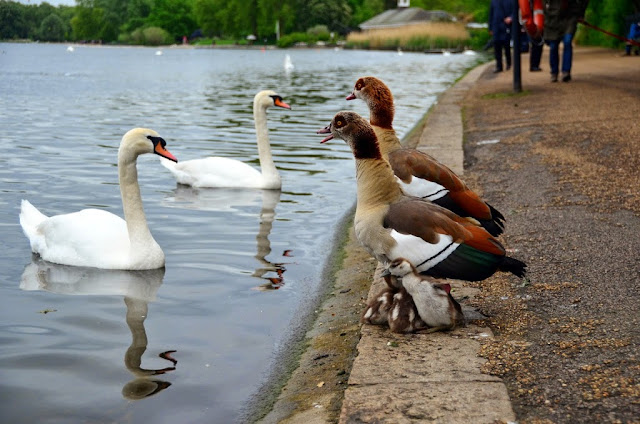



































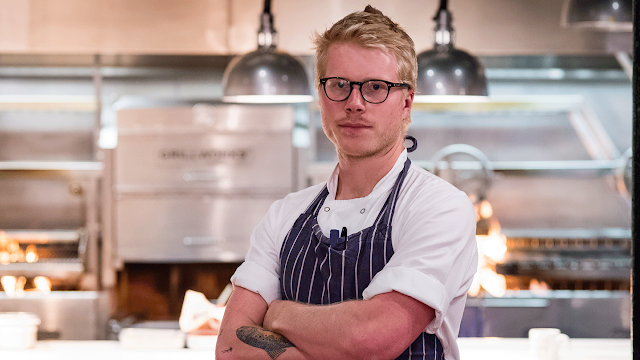



































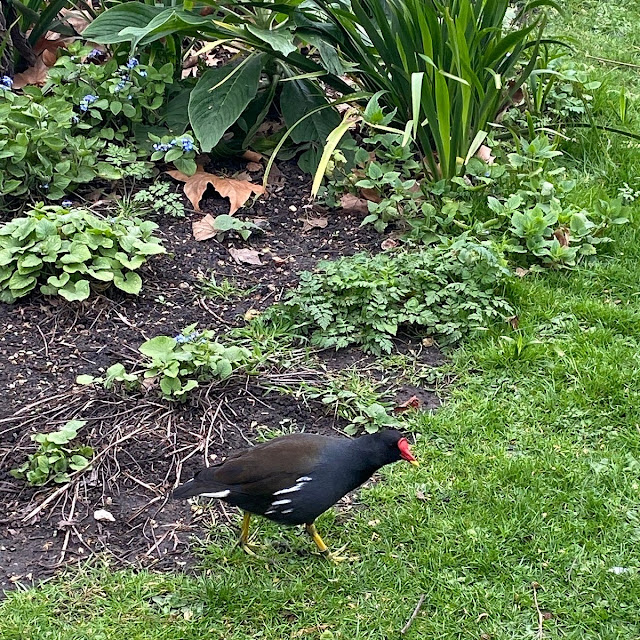
_jeh.jpg)




.jpg)



















































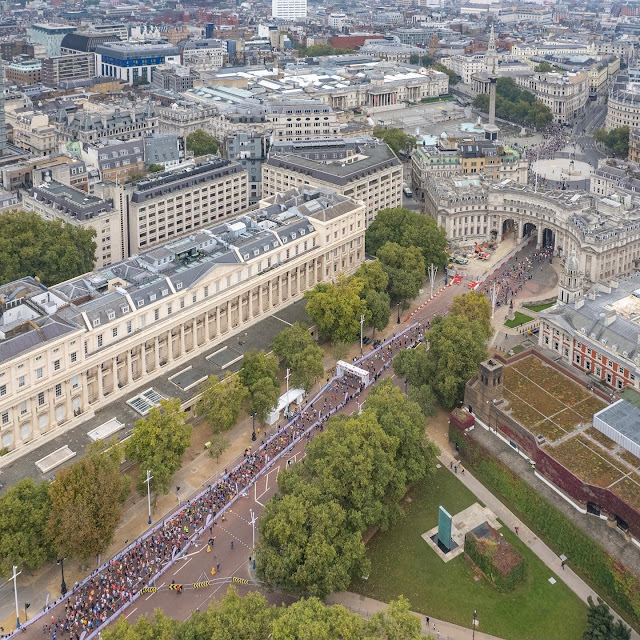










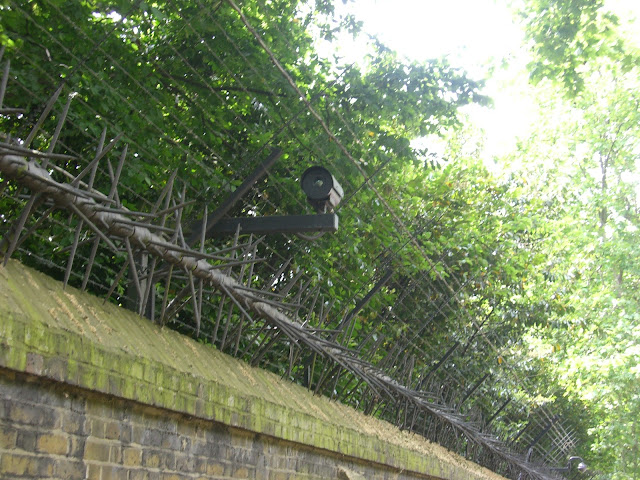














































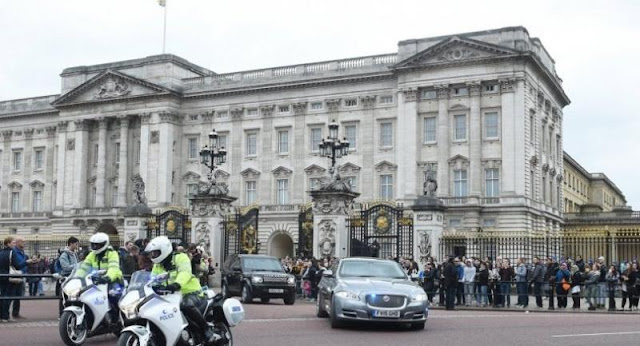















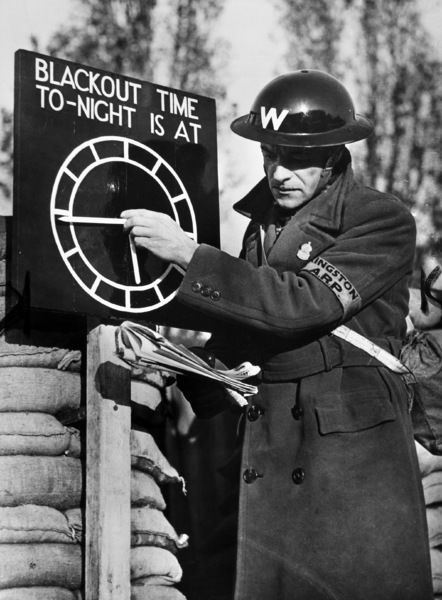



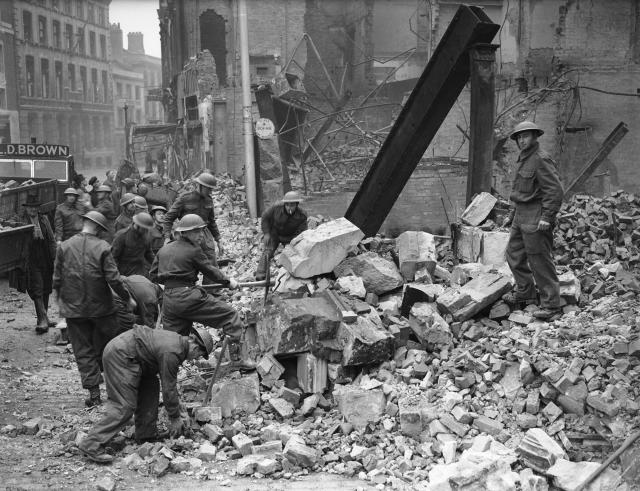





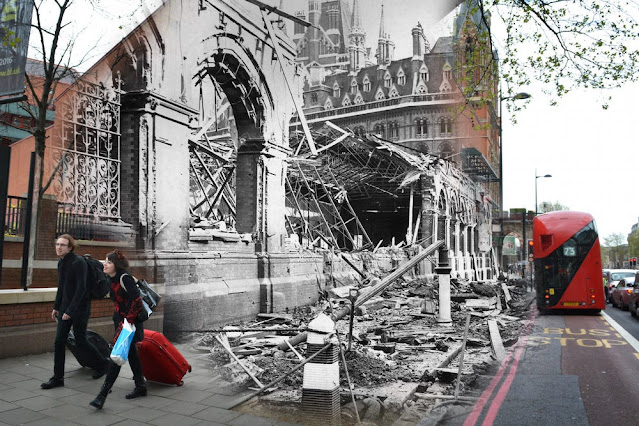







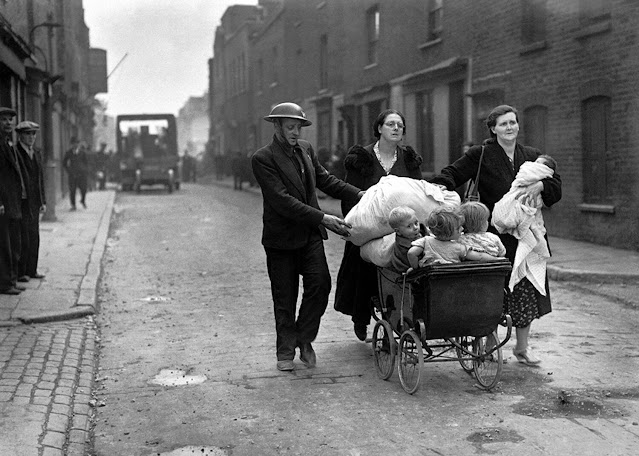












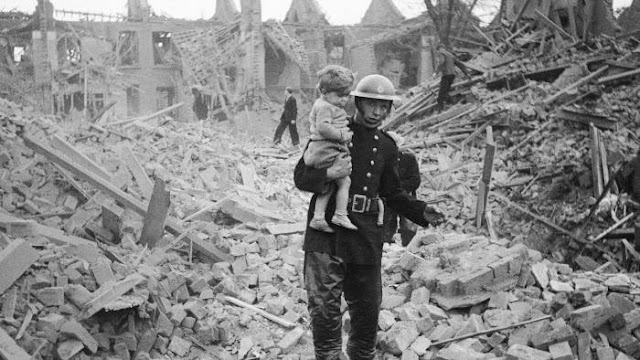


















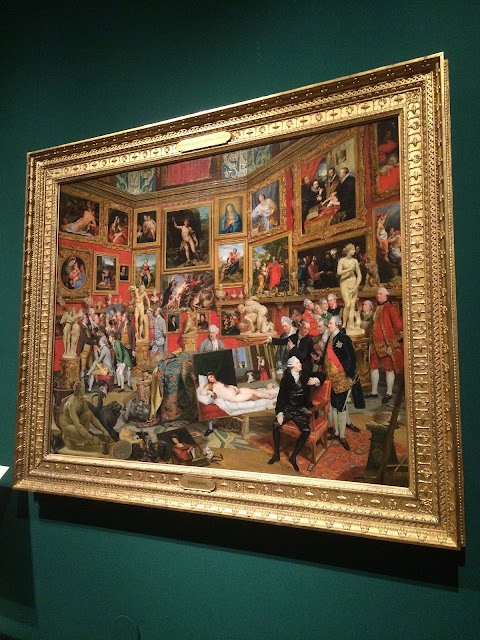









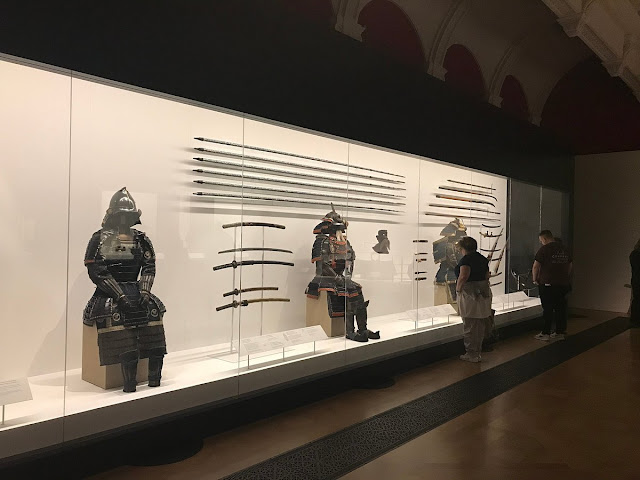







































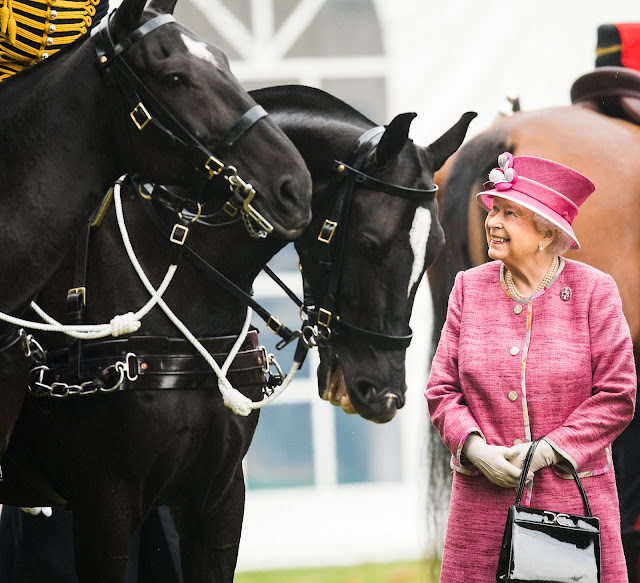















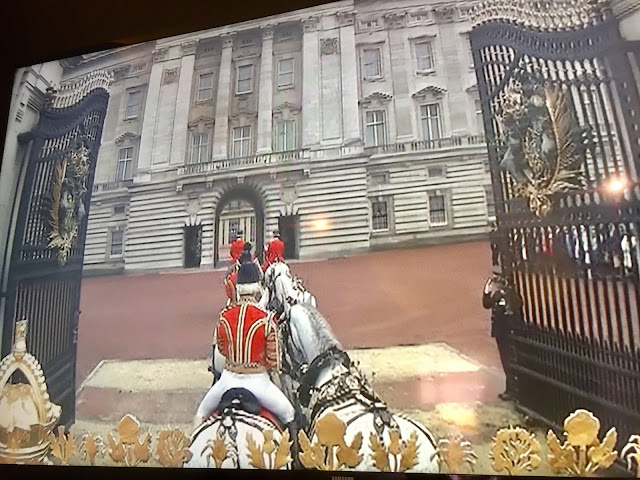
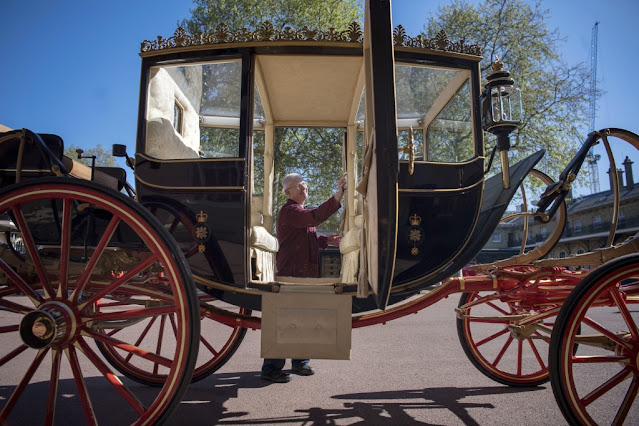
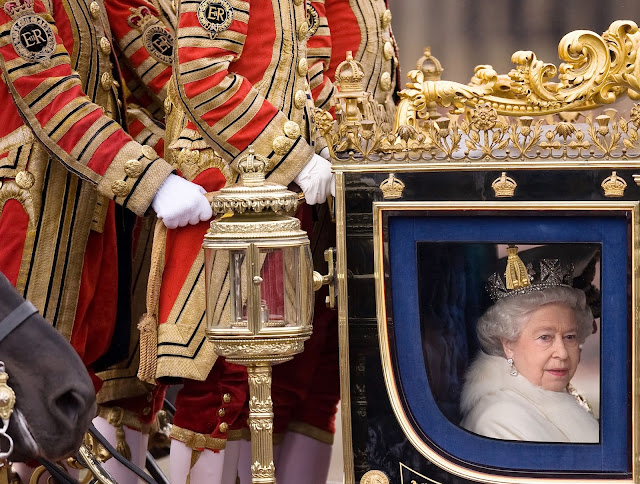


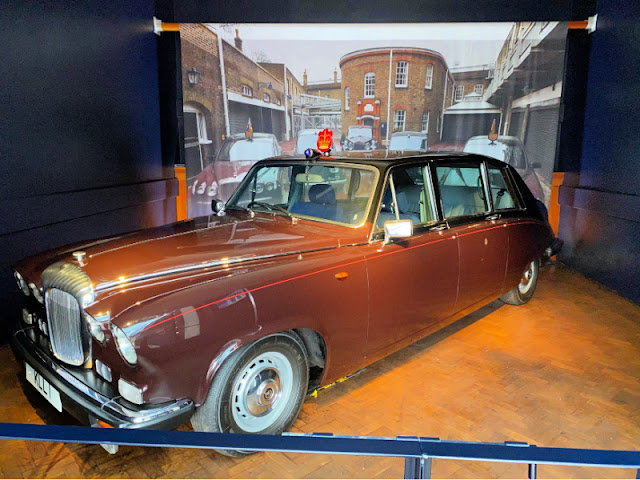












































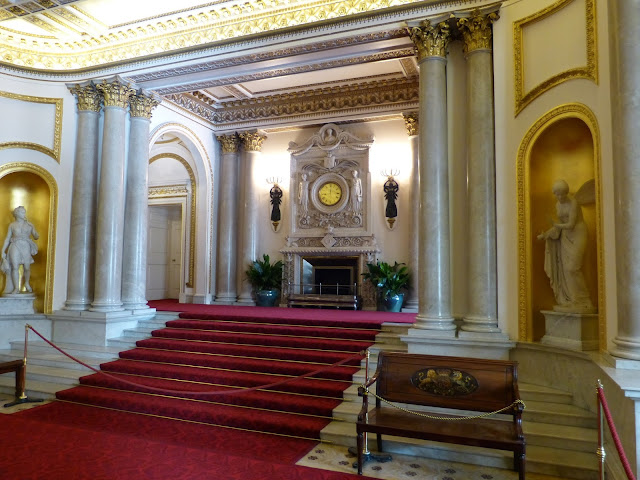













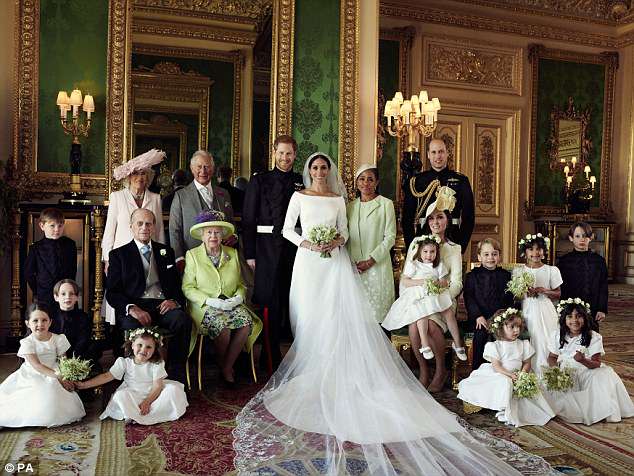








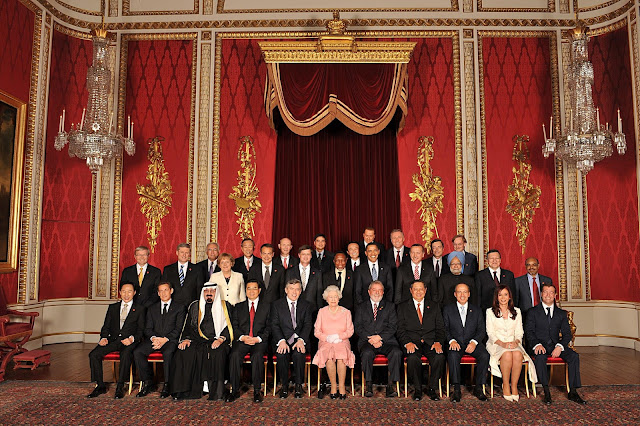




















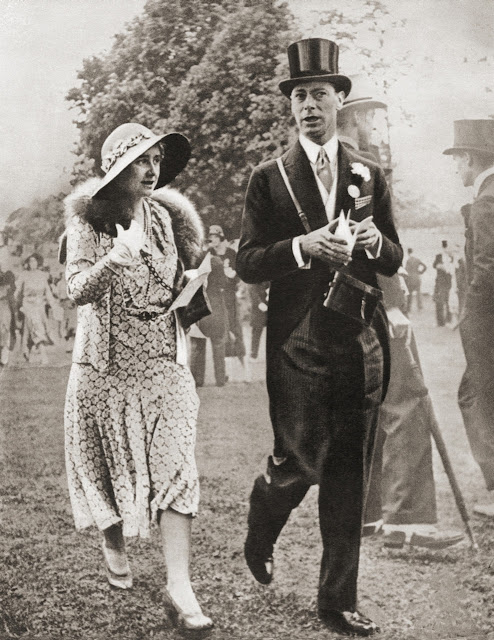




















































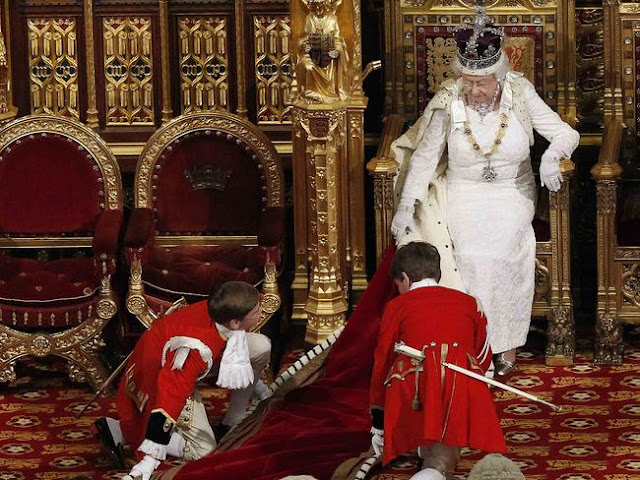











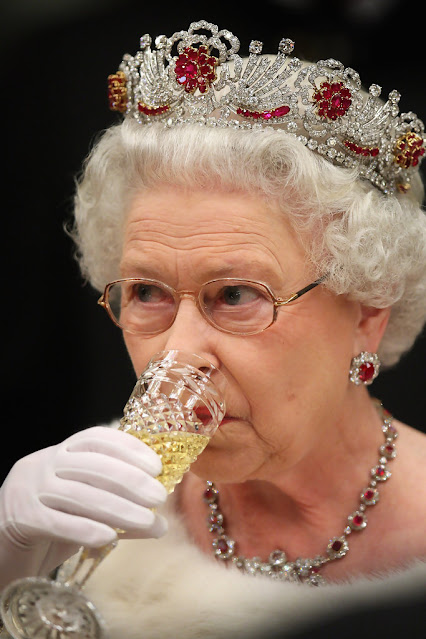










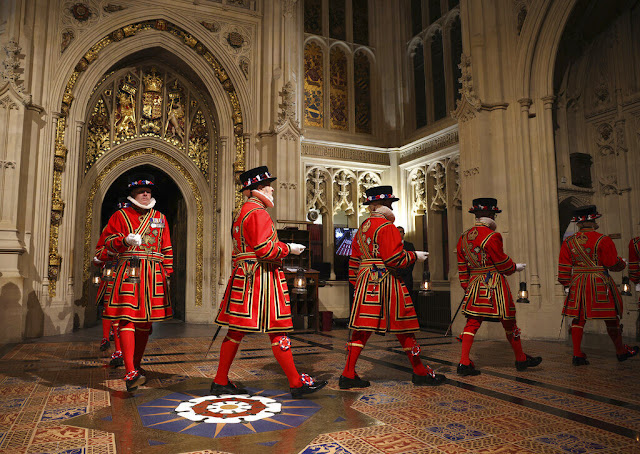
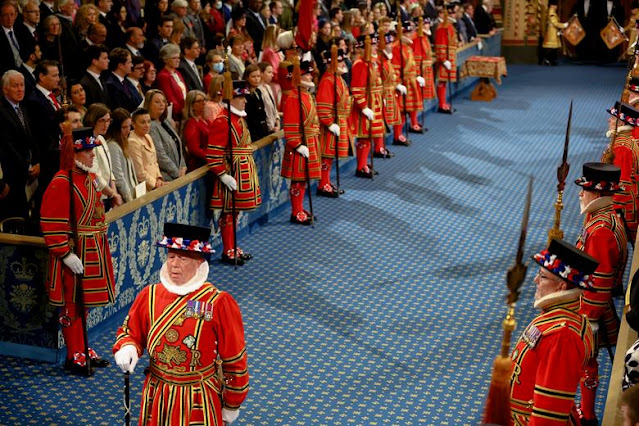






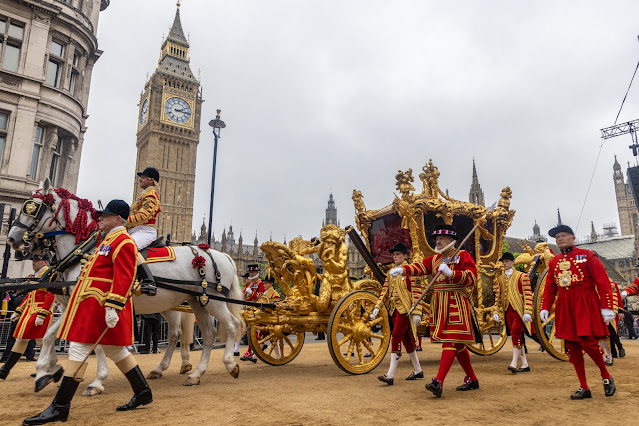

















































































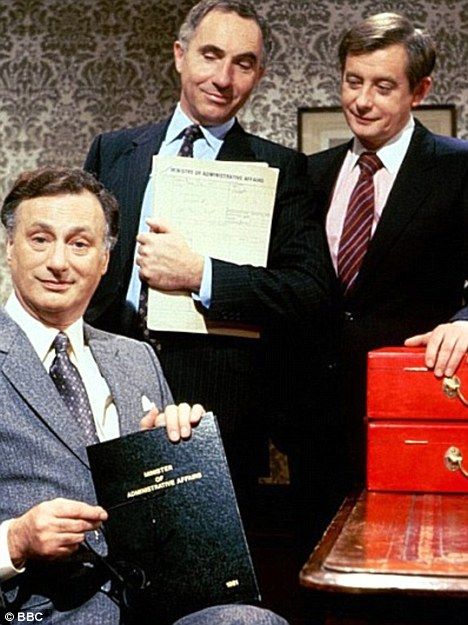





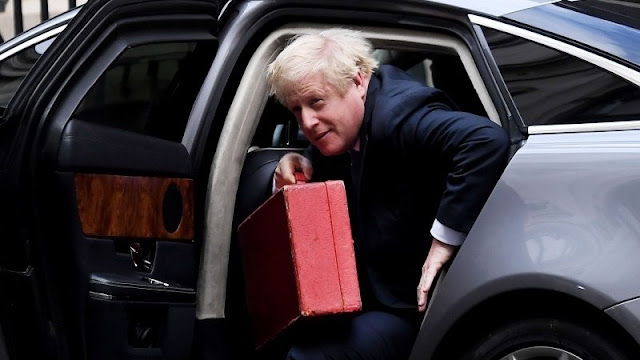
























































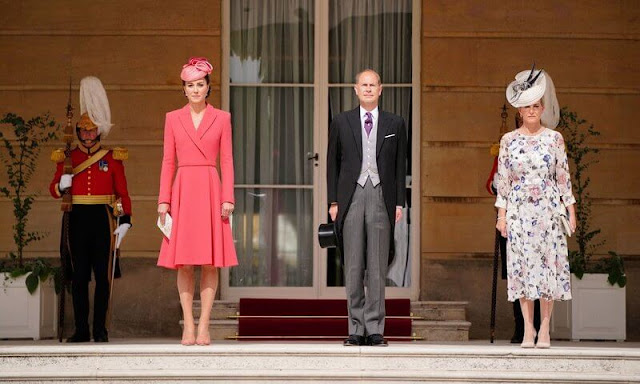










































No comments:
Post a Comment
Don't be shy: leave your comments :)